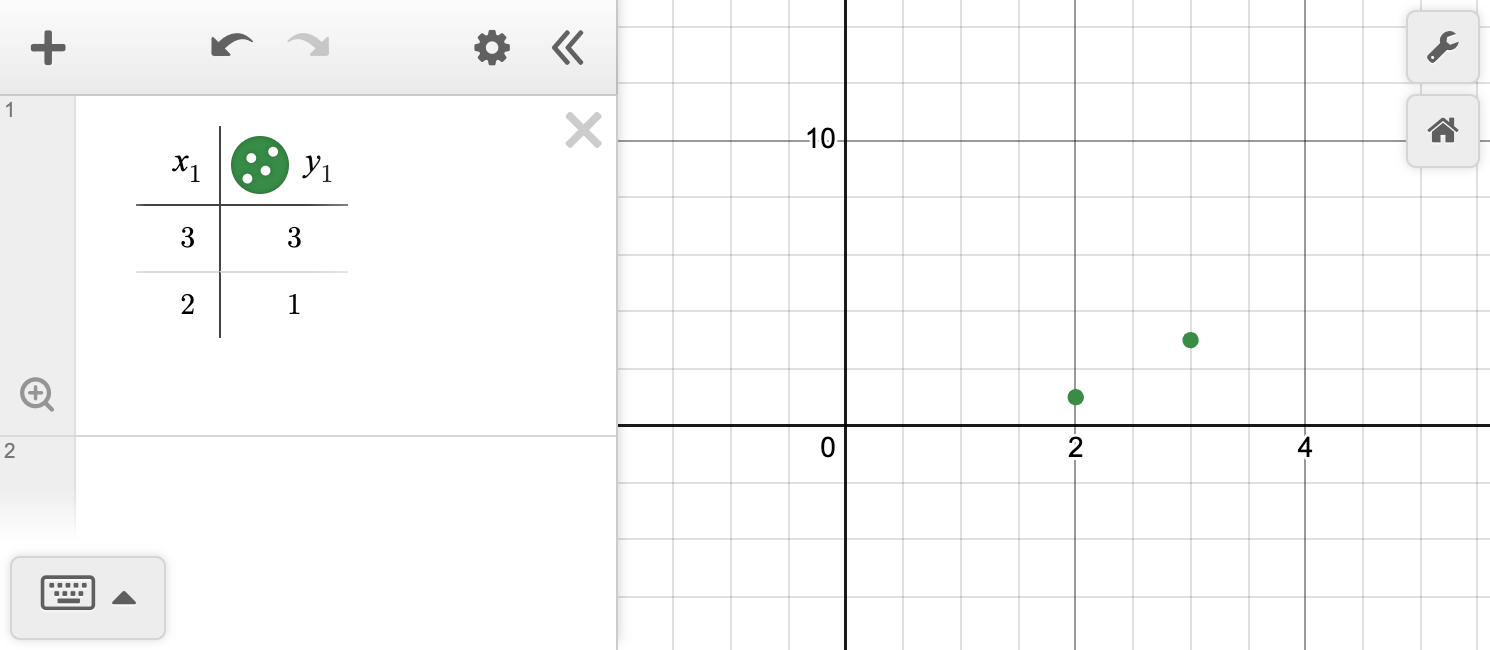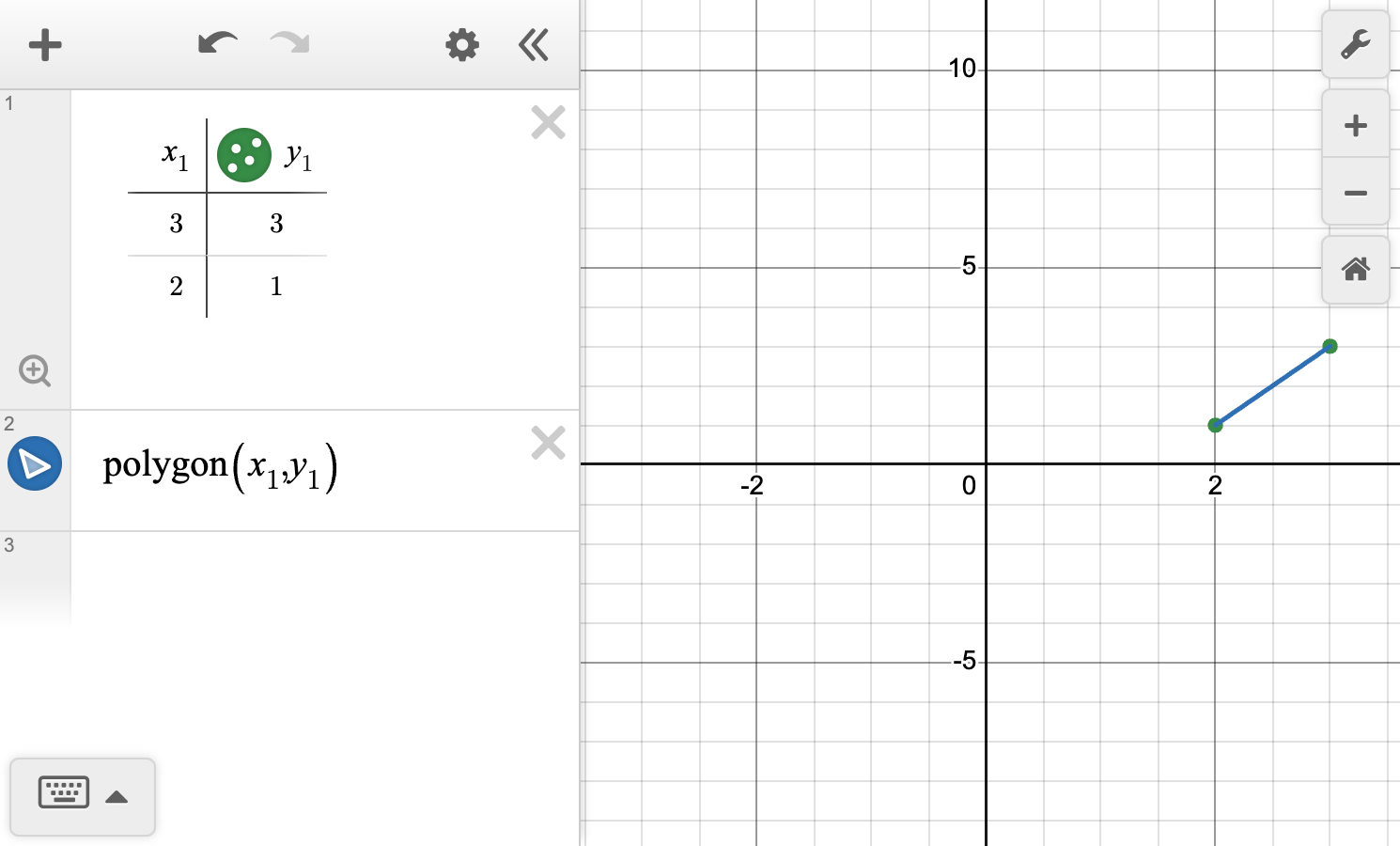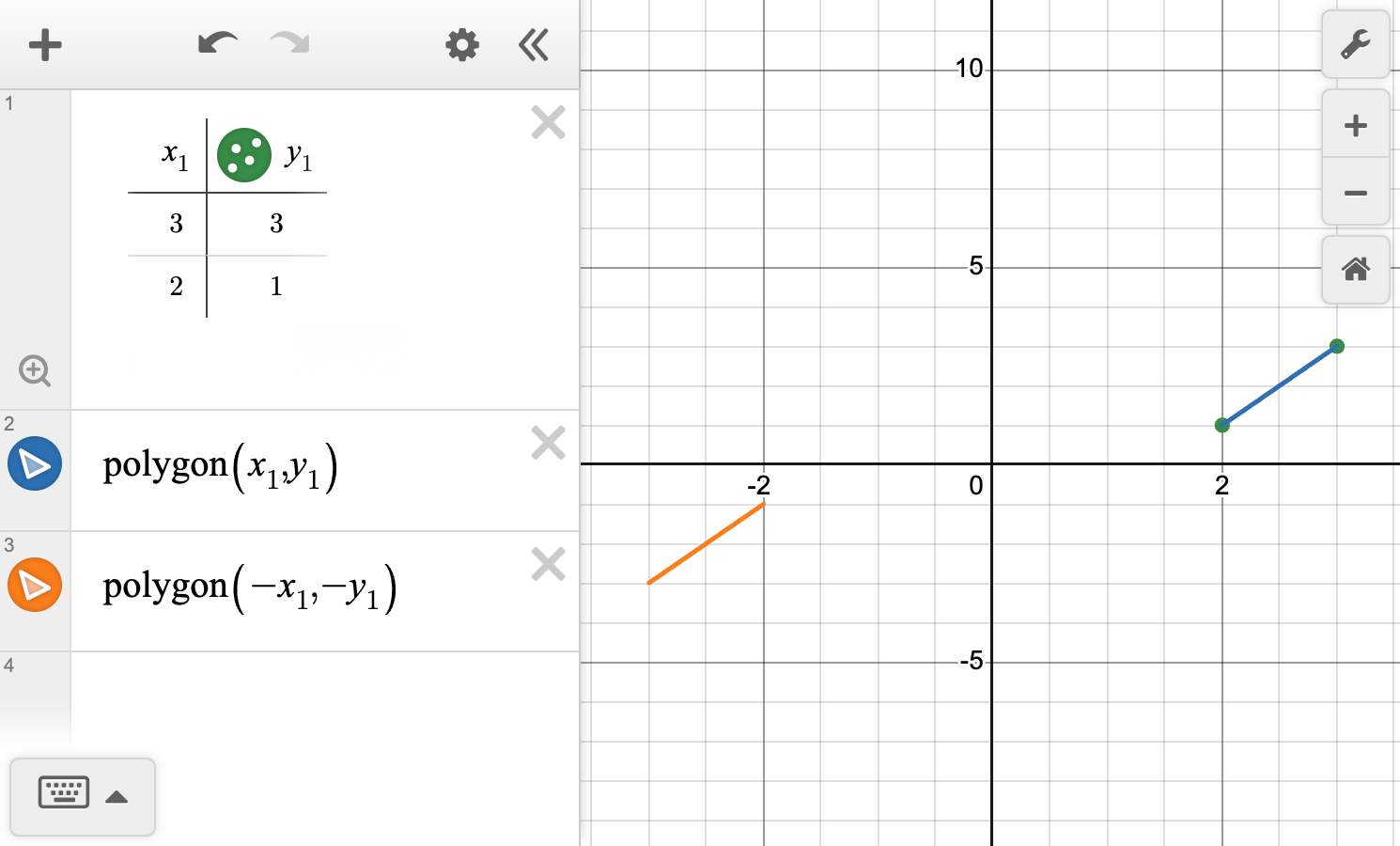5.03 Rotations
Ideas
Rotations
Exploration
Move the slider to create a rotating image of the figure and check the boxes to explore.
- What do you notice about the coordinates of the preimage and image for each angle of rotation?
- What do you notice about the distance segments that are the same color?
- What do you notice about the angles formed by the pairs of same colored segments?
A rotation is a transformation of a figure by turning it about a point called the center of rotation. The amount of rotation can be expressed in the number of degrees. The direction of the rotation for two-dimensional figures can be described in the clockwise or counterclockwise direction. When it is not specified we assume the direction is counterclockwise.
Connecting the center of rotation to any point on the preimage and to its corresponding point on the rotated image, the line segments are equal in length and the measure of the angle formed is the angle of rotation.
When rotated about the origin, the coordinate mappings are as follows:
Degree of rotation counterclockwise: 90 \degree \, \, \, \qquad Coordinate mapping: \left(x,y \right) \to \left(-y,x\right)
Degree of rotation counterclockwise: 180 \degree \qquad Coordinate mapping: \left(x,y \right) \to \left(-x,-y\right)
Degree of rotation counterclockwise: 270 \degree \qquad Coordinate mapping: \left(x,y \right) \to \left(y,-x\right)
Degree of rotation counterclockwise: 360 \degree \qquad Coordinate mapping: \left(x,y \right) \to \left(x,y\right)
Examples
Example 1
\overline{AB} has been rotated counterclockwise about the origin.
Describe the rotation required to map \overline{AB} to \overline{A'B'}.
Write the coordinate mapping.
Example 2
Rotate 270 \degree counterclockwise about the origin.
Example 3
A quadrilateral undergoes a 90 \degree clockwise rotation, resulting in an image with vertices at A' \left(2, 7 \right),\, B' \left(3, 2\right),\,C' \left(8, 3\right), and D' \left(7, 8\right).
Determine the coordinates of the preimage vertices A, B, C, and D before the rotation.
When rotated counterclockwise about the origin, the transformation mappings are as follows:
Degree of rotation: 90 \degree \, \, \, \qquad Coordinate mapping: \left(x,y \right) \to \left(-y,x\right)
Degree of rotation: 180 \degree \qquad Coordinate mapping: \left(x,y \right) \to \left(-x,-y\right)
Degree of rotation: 270 \degree \qquad Coordinate mapping: \left(x,y \right) \to \left(y,-x\right)
Degree of rotation: 360 \degree \qquad Coordinate mapping: \left(x,y \right) \to \left(x,y\right)



